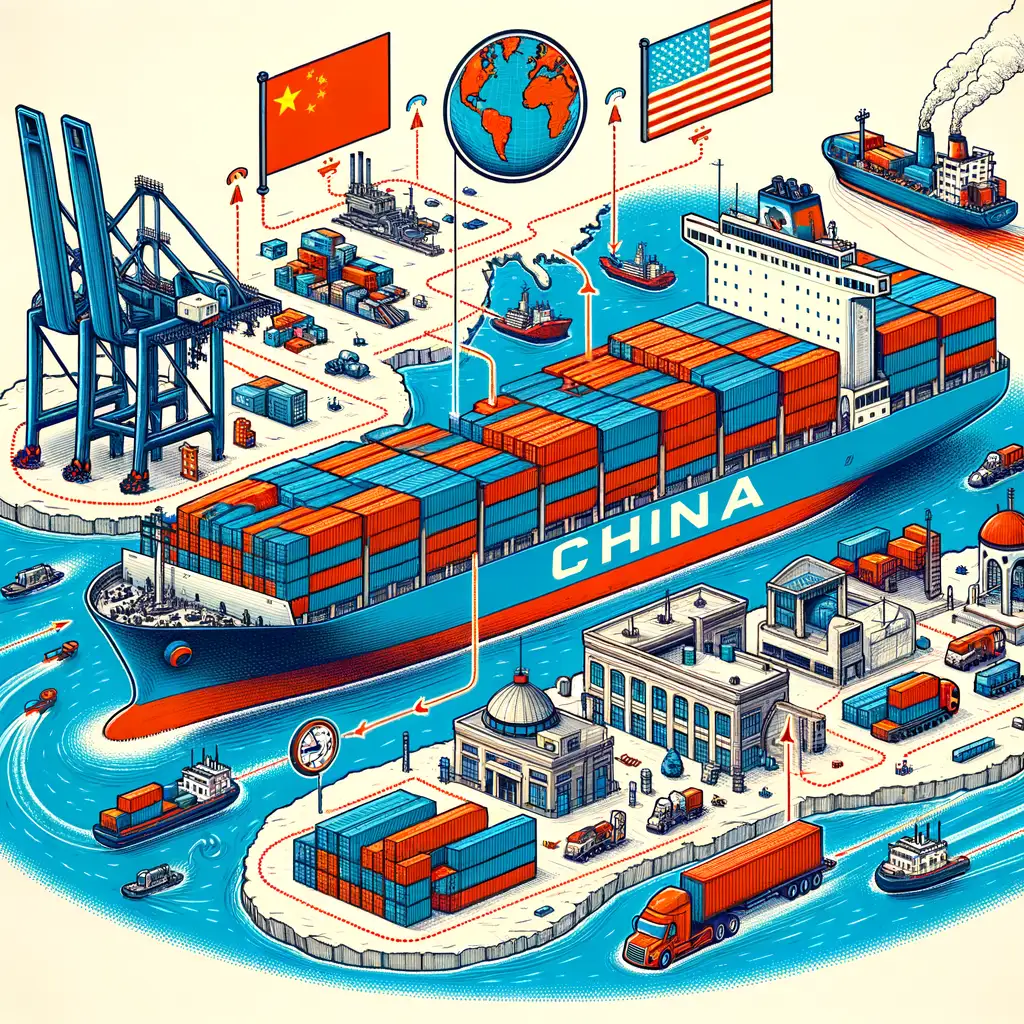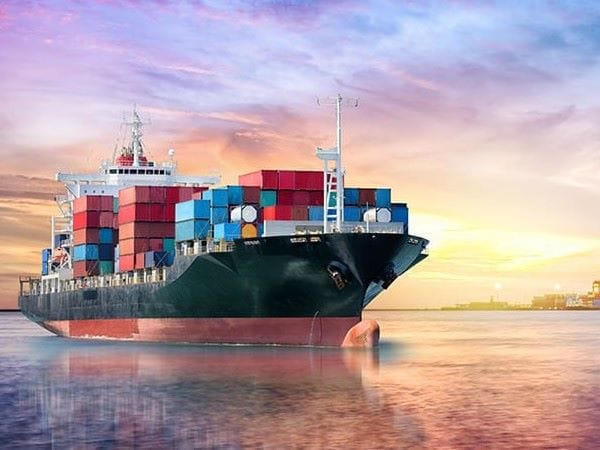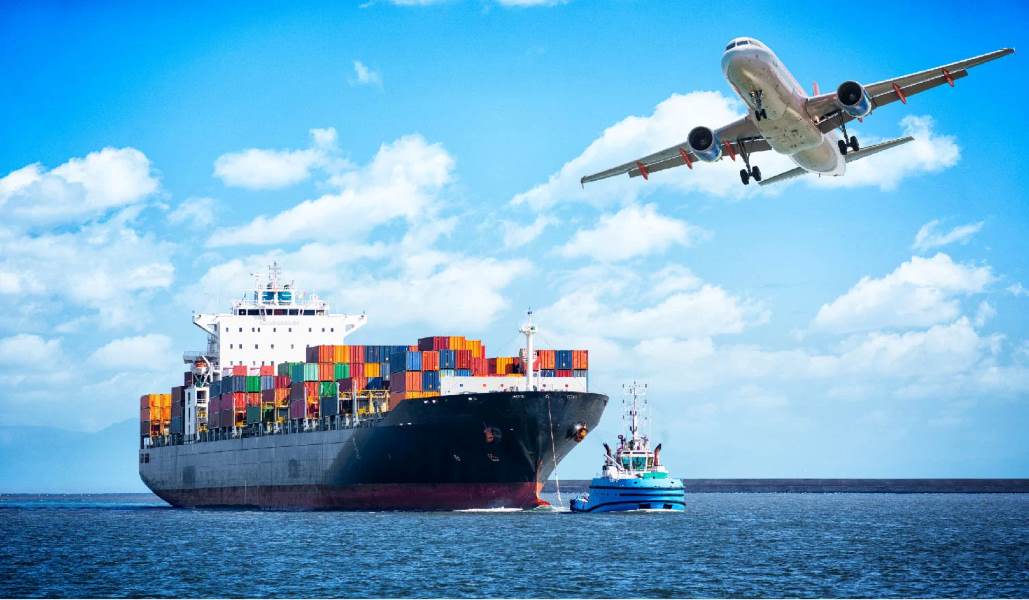China and USA have active trade ties, with large quantities of goods constantly crossing the Pacific. Container shipping is a key mode of transport that connects the industrial centers of the two countries. Understanding the costs and processes of 20ft and 40ft container shipping from China to USA can help import and export companies better plan logistics costs and efficiency.

Container Shipping from China to USA
Container transportation refers to the logistics method of loading goods in containers for long-distance shipping. For bulk cargo transportation between China and the United States, container shipping is the most economical and stable option. Depending on the volume, weight and timeliness of the goods, companies can choose different types of containers and transportation routes.
Goods are mainly transported from major ports in China (such as Shanghai, Ningbo, Shenzhen) to major ports in the United States (such as Los Angeles, Long Beach, New York, etc.), with multiple direct routes between the two, usually taking 25-35 days.
Difference Between 20ft and 40ft Containers
Container type affects the optimization of transportation costs and loading volume. Common container types are 20ft and 40ft containers. Their main differences are:
- Loading capacity and applicable scenarios: 20ft containers are suitable for smaller batches of goods or heavier goods, with a load capacity of about 28 tons. 40-foot containers are suitable for large batches of goods or larger goods, with a load capacity of about 30 tons.
- Cost comparison: Although the single transportation cost of a 40ft container is higher than that of a 20ft container, it is more economical per cubic meter.
- Flexibility: 20ft containers are more suitable for small businesses or heavier but smaller goods, and are easy to load and unload at ports.
- Capacity difference: The capacity of a 20-foot container is about 33 cubic meters, while the capacity of a 40-foot container is about 67 cubic meters.
Major Ports in USA
In container shipping in USA, different ports have different costs and customs clearance speeds. Here are the characteristics of several major ports
Port of Los Angeles
Location and Capacity: The Port of Los Angeles is located in Southern California and plays an important role in trade between North America and the world, with an annual cargo volume of 19.2 million TEUs. Close to the California market. Low transportation costs and fast customs clearance, but severe congestion during peak season.
Port of Long Beach
Long Beach Port is adjacent to the Port of Los Angeles and ranks second in the United States in container throughput, reaching 11.6 million TEUs. The port’s major trading partners are East Asia, Southeast Asia, and Oceania, and it is an important hub on the trans-Pacific trade route.
Port of New York and New Jersey
Located on the East Coast, the Port of New York and New Jersey is the busiest port on the East Coast, with an annual throughput of more than 8.4 million TEUs.
Connectivity and location are excellent, serving the Atlantic and Midwest regions through an extensive rail network, with higher transportation costs.
Port of Savannah
Located in Georgia, the Port of Savannah is the fourth busiest port in the United States, with an annual throughput of approximately 5.4 million TEUs. With expansion facilities over the years, the shipping costs are moderate, and it is suitable for access to the southeastern market.
Port of Houston
Location and volume: The Port of Houston is located in Texas, with an annual throughput of more than 4 million TEUs, mainly in the southern United States, and is suitable for access to the central and southern markets of the United States. It is an important hub for petrochemical commodities. The costs are moderate and customs clearance is fast.
Cost of Shipping 20ft and 40ft Containers from China to USA
Container shipping costs usually consist of the following parts:
- Sea freight: basic shipping costs from Chinese ports to US ports, accounting for the largest proportion.
- Port fees: including terminal usage fees, loading and unloading fees, etc., and the fees for each port are different.
- Fuel surcharge: surcharges affected by international oil price fluctuations.
- Safety surcharge: marine safety surcharge for customs inspection.
- Destination port fees: including terminal fees, customs clearance fees, etc. at US ports.
The cost of shipping from China to the East Coast of USA is US$3,000-$4,000 for a 20ft container and $4,000-$6,000 for a 40ft container.
The cost of shipping from China to the West Coast of USA is US$2,000-$3,000 for a 20ft container and $3,000-$5,000 for a 40ft container.

The shipping costs will fluctuate according to market demand, peak season, shipping companies and other factors. The following are the costs of shipping from major Chinese ports to major USA ports:
| POL (Port of China) | POL (Port of USA) | 20ft Container Cost | 40ft Container Cost |
|---|---|---|---|
| Shanghai | Los Angeles | $2050-$3000 | $3200-$4500 |
| Shenzhen | Los Angeles | $2000-$2900 | $3150-$4650 |
| Ningbo | Los Angeles | $2000-$3000 | $3350-$4750 |
| Shanghai | Long Beach | $2050-$2950 | $3250-$4550 |
| Shenzhen | Long Beach | $2150-$3000 | $3150-$4600 |
| Ningbo | Long Beach | $2000-$2850 | $3200-$4500 |
| Shanghai | New York | $3000-$3800 | $4050-$5550 |
| Shenzhen | New York | $3050-$3900 | $4350-$5600 |
| Ningbo | New York | $3050-$4000 | $4200-$5650 |
| Shanghai | Savannah | $3050-$3900 | $4100-$5600 |
| Shenzhen | Savannah | $3050-$3850 | $4100-$5750 |
| Ningbo | Savannah | $3050-$3900 | $4300-$5850 |
| Shanghai | Houston | $2850-$3700 | $4100-$5650 |
| Shenzhen | Houston | $2950-$3900 | $4050-$5650 |
| Ningbo | Houston | $2800-$3900 | $4050-$5650 |
Read below for container shipping costs to other countries to help you understand more:
- Cost of Shipping 20ft and 40ft Containers from China to Tanzania
- Cost of Shipping 20ft and 40ft Containers from China to South Africa
- Cost of Shipping 20ft and 40ft Containers from China to Nigeria
- Cost of Shipping 20ft and 40ft Containers from China to Turkey
- Cost of Shipping 20ft & 40ft Containers from China to Egypt
- Shipping Costs for 20ft And 40ft Containers from China to UAE
- Cost of Shipping 20ft and 40ft Containers from China to Saudi Arabia
Factors Affecting the Cost of Shipping from China to USA
Shipment from China to USA is also affected by a variety of factors
- Season and market demand: Transportation costs will rise sharply during holidays or peak seasons (such as back-to-school season, Christmas season, etc.).
- Fuel prices: Fluctuations in international oil prices will directly affect fuel surcharges.
- Port congestion: Busy ports may incur additional detention fees or congestion surcharges.
- Cargo type: Dangerous goods, temperature-controlled goods, large goods, etc. may require special handling, which will increase costs.
- Destination distance: The transportation cost of choosing a port on the west coast of the United States is lower than that of the east coast, but the appropriate port should be selected based on the final destination of the goods and the logistics cost.
- Service provider: The prices of different logistics companies or shipping companies will also vary.
How to Optimize Shipping Costs
Plan transportation time in advance
Avoid peak transportation seasons, during which the prices of sea and air freight usually increase. Planning ahead and shipping during off-seasons can reduce freight costs.
Avoid delay fees and detention fees
Excessive detention at the destination port may incur additional costs. Make preparations for customs clearance and receiving in advance to reduce detention fees.
Optimize cargo packaging
Try to reduce the volume of packaging while ensuring the safety of the goods to reduce the freight charges charged by volume. Reasonably design the packaging method and packing layout to maximize the space utilization of the container, thereby reducing the number of containers.
Choose a port with lower costs
From China to the United States, the freight rates of East Coast ports are usually higher than those of West Coast ports. Choose the nearest and lowest-cost port based on the destination location to save on inland transportation costs.
Bargaining
Bargaining with shipping companies and freight forwarding companies is possible, especially when shipping in large quantities, and discounts can usually be obtained.
Flexible freight terms
According to the nature of the goods and the arrangements between the buyer and the seller, choosing reasonable trade terms (such as FOB, CIF, etc.) can reduce the logistics costs of all parties.
Learn more: The 11 Common International Trade Terms
Use free trade zones and tax reduction policies
Store goods in bonded areas of import destination countries to delay the payment of tariffs, thereby reducing short-term capital occupation costs. By using preferential tariffs and exemption policies (such as the China-US Economic and Trade Agreement and the Asia-Pacific Economic and Trade Agreement), tariff costs can be reduced.

Customs Clearance Documents for Container Shipping from China to USA
Customs clearance documents are important documents to ensure smooth customs clearance of goods, including the following main documents:
- Commercial Invoice: Describes the content, value and quantity of the goods, which is required for customs clearance.
- Packing List: Lists all goods, dimensions and weights to help customs verify the contents of the goods.
- Bill of Lading (B/L): As a certificate of title to the goods, it is used to pick up the goods at the destination.
- Certificate of Origin: Depending on the nature of the goods and trade agreements, some goods may require a certificate of origin.
- Other customs clearance documents: Certain specific goods may require other documents, such as licenses, test reports, etc., depending on US import regulations.
Learn more: Customs Clearance and Fees
Why Choose Ubest Shipping
Freight forwarders play a key role in the shipping process, acting as an intermediary between shippers and carriers. Utilizing a freight forwarder can reduce costs in the following ways:
- Negotiated rates: Freight forwarders often have established relationships with carriers, allowing them to negotiate better shipping rates.
- Consolidation services: They can consolidate shipments to reduce costs, especially for smaller shipments.
- Customs expertise: Freight forwarders are familiar with customs regulations, which can help avoid costly delays and penalties.
Service is equally important when evaluating freight forwarders
- Scope of services: Choose a freight forwarder that offers a full range of services, including door-to-door shipping, customs clearance, warehousing services, and insurance services. This range of services ensures streamlined communication and coordination.
- Technology and tracking: Evaluate the technological capabilities of a potential freight forwarder. A reliable freight forwarder should offer tracking tools that allow you to monitor your shipment in real time, allowing for greater transparency and communication throughout the shipping process.
Shipping 20ft and 40ft containers from China to the United States involves multiple steps. This article will help you understand seasonal fluctuations and market changes, and help you choose the mode and timing of transportation according to your needs, so that goods can be delivered to the United States quickly and efficiently.
